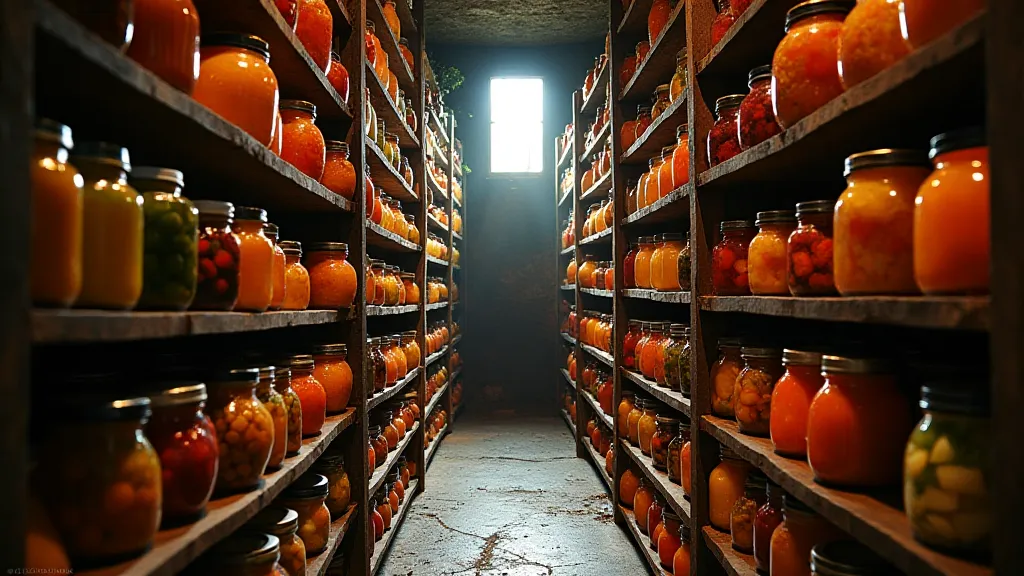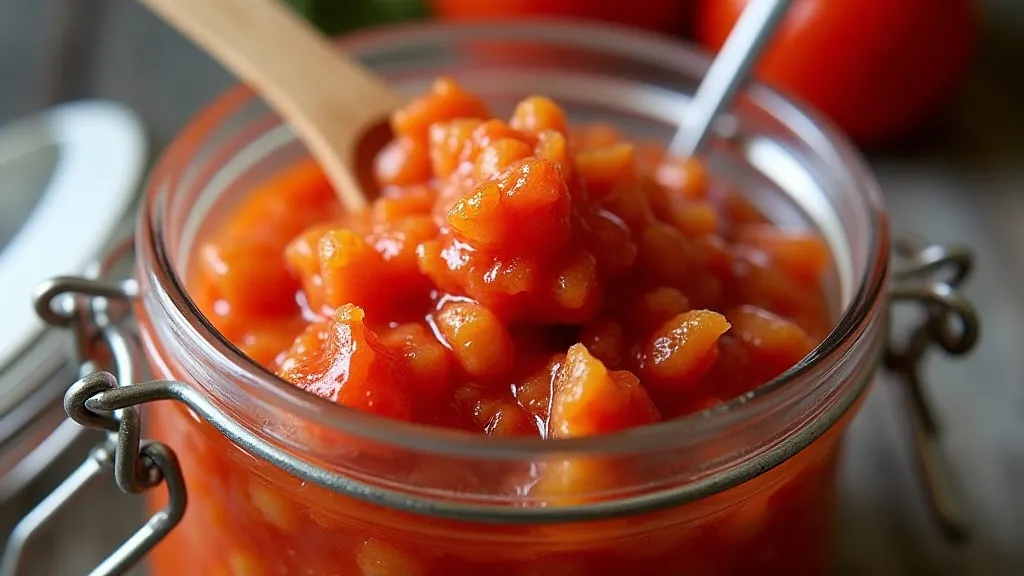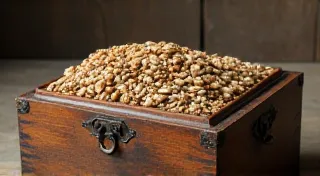The Alchemist's Garden: Fermenting Tomato Magic for Winter's Bounty
There's a peculiar kinship, I’ve found, between the passionate gardener and the collector of antique accordions. Both are drawn to objects imbued with history, each note resonating with the echoes of past hands, past stories. An accordion, meticulously crafted from wood, bellows, and keys, is an instrument of joy, often accompanying celebrations and whispered secrets. Similarly, the heirloom tomato, a living artifact, carries within it the legacy of generations, a taste far richer and more complex than its modern counterparts. And just as an accordion thrives with careful maintenance, so too does the harvest of these magnificent tomatoes, especially when transformed through the ancient art of fermentation.
My grandmother, a woman who could coax roses from concrete and flavor from the most humble ingredients, always had a cellar bursting with preserved treasures. Jars of peaches, plums, and pickles lined the shelves, testament to her resourcefulness and deep connection to the seasons. She’s the one who first introduced me to the magic of fermentation. It wasn't a ‘recipe’ she followed, but an instinct, a dance with microbes passed down through her family. She's gone now, but the scent of simmering tomatoes, garlic, and herbs simmering on the stove forever fills my memory.

Why Heirloom Tomatoes? A Taste of History
The modern tomato, bred for uniformity and shelf life, often lacks the nuanced flavors of its ancestors. Heirloom tomatoes, varieties passed down through generations—often named after the families who cultivated them—offer a vibrant tapestry of tastes and colors. Brandywine, Cherokee Purple, Green Zebra, Black Krim... each tells a story. Brandywine, for example, is rumored to have originated in Pennsylvania in the 1880s. Cherokee Purple, with its dusky, almost chocolate-like hue and smoky-sweet flavor, speaks of Native American cultivation. They are a direct link to a time when food was a connection to heritage, not just sustenance.
Growing these treasures in containers, as many of us are forced to do in smaller spaces, is a rewarding challenge. It allows us to savor the process, to be intimately involved in the lifecycle of these remarkable plants. The containers become small ecosystems, cradling the potential for a truly exceptional harvest. And that harvest, when transformed through fermentation, becomes a legacy we can enjoy long after the last tomato has fallen from the vine.
The Alchemy of Fermentation: Beyond Canning
While canning preserves the flavor and texture, fermentation unlocks something deeper. The natural bacteria, present on the tomatoes themselves, work their magic, breaking down sugars and creating lactic acid. This process not only extends the shelf life but also transforms the flavor, creating complex, tangy notes that are simply unparalleled. It’s a process that was once essential for preserving food before refrigeration and is now increasingly recognized for its health benefits. Fermented foods are rich in probiotics, beneficial bacteria that support gut health and overall well-being.
Tomato Kimchi: A Korean-Italian Fusion
My most beloved project is a fusion recipe – Tomato Kimchi. The spicy, savory depth of Korean kimchi combined with the sweetness of heirloom tomatoes is a revelation. It's unexpected, but utterly addictive. The preparation begins just as you would a traditional kimchi: a brine of salt and water is used to draw out moisture from the sliced tomatoes. Then, a vibrant paste is made with gochugaru (Korean chili powder), garlic, ginger, fish sauce (or a vegetarian alternative like seaweed flakes), and a touch of sugar. This paste is generously slathered on the tomatoes, packed tightly into a fermentation jar, and left to work its magic.
The beauty of fermentation is that it is surprisingly forgiving. Unlike baking, where precision is paramount, fermentation thrives on a bit of experimentation. There's a certain humility in relinquishing control and trusting the natural processes at work. You’re not *making* kimchi; you're *guiding* it.

Simple Fermented Tomato Sauce: An Italian Classic Reimagined
For a simpler project, consider fermented tomato sauce. Unlike a traditional cooked sauce, this version utilizes the power of fermentation to develop a deeper, more complex flavor. Begin by lightly salting crushed heirloom tomatoes (San Marzano are excellent for this) and packing them into a clean fermentation jar. Weigh them down with a fermentation weight to keep them submerged. The process takes about a week, depending on the temperature of your kitchen. The resulting sauce is incredibly versatile – perfect for pasta, pizza, or as a base for soups and stews.
The process of restoration, whether applied to a battered accordion or a forgotten tomato variety, speaks to a deep respect for history and craftsmanship. It’s about bringing something back to life, allowing it to tell its story. This same spirit of preservation applies to fermentation. We're not simply preserving tomatoes; we're preserving a tradition, a connection to the past, and a way of savoring the bounty of the harvest.
Tips for Successful Fermentation
- Cleanliness is key: Sterilize your jars and equipment thoroughly.
- Use quality ingredients: Heirloom tomatoes are essential for the best flavor.
- Maintain consistent temperature: Ideal fermentation temperatures are between 65-75°F (18-24°C).
- Submerge the vegetables: Use fermentation weights to keep them below the brine level.
- Trust your senses: Look for bubbles, listen for the gentle fizz, and taste regularly (after about a week).
Imagine, on a cold winter evening, opening a jar of your own fermented tomato creations. The aroma fills the kitchen, transporting you back to the warmth of summer, the satisfaction of a successful harvest, and the enduring legacy of an heirloom tomato – a living testament to the alchemist's garden.






